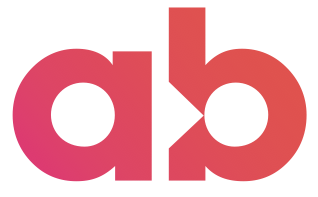Three steps to manage high-performance networked teams
Learning & Development Blog

Written by Achieve Breakthrough

In a world where volatility and rapid change are the norm, leaders must learn to balance seemingly opposing forces. The upcoming book, SHIFT: Leading from the Future – co-authored by Mike Straw, CEO and founder of Achieve Breakthrough, and leadership expert Paul Adams – explores the critical mindset shifts needed to navigate today’s complex business environment. Over the next few weeks, we’ll be publishing a series of articles that dive deeper into the book’s core themes. Here we examine why modern leadership relies on the ability to flex between different types of leadership and organisational structures.
New leadership skills for hybrid, fast-moving, high-impact teams
Leading in today’s business environment is undoubtedly challenging. Volatile, uncertain, complex and ambiguous – the acronym VUCA succinctly sums up the experience many leaders find in their businesses. Not only are the challenges faced faster moving, more varied and unforeseeable, but the individuals deployed to meet them have higher expectations and different requirements of leadership.
But the temptation to tighten the reins and impose more hierarchy in attempt to stay in control could well be counterproductive. Instead, effective leaders must practise flexing between different types of leadership and different organisational structures.
The need for agility, flexibility and innovation is driving many organisations to implement more fluid organisational structures in which teams are constituted for specific objectives and limited time. Plus, despite recent efforts, and in some cases mandates, to get workers back into offices, it is likely that hybrid working will remain the ‘new normal.’ These developments make the traditional hierarchical lines of reporting ever harder to maintain and manage. Individuals may find themselves in leadership positions but without the title or traditional status of hierarchical leaders. Conversely, those at the top of hierarchies may find they lack the levers of control they once thought they had.
Put winning ways aside
Today, leaders, or those in leadership positions, need to exhibit a different set of skills. Although there will be times when hierarchical control is still required, for example in a crisis where rapid decisions on deployment of resources to meet urgent needs, leaders today also need to flex to more influence-based models in a fluid networked structure. What is clear is that the old badges of title, tenure and ‘Winning Ways’ are not sufficient to lead anymore.
‘Winning Ways’ have long been the source of leaders’ authority. Tried and tested approaches that have served the individual well as they moved ‘up through the ranks’ were seen as the best indicator of their effectiveness as a leader. But with business challenges today looking nothing like those of yesterday, these ‘Winning Ways’ are not only irrelevant, but counterproductive. As they say, if all you have is a hammer, every problem looks like a nail. In a networked organisation, leaders need to show the courage to step outside of their experience of what has worked for them in the past, to engage with the facts of the new situation. Leadership in a networked world means declaring that you don’t have all the answers, whilst committing to supporting the team in finding new solutions to move forward.
Promise and request
Leading in this context does not mean telling people what to do. The traditional hierarchical leadership language of ‘Orders and Reports’ must be replaced with a new language of ‘Requests and Promises.’ I’ll let you know what I will do and ask you to make contributions specific to your strengths, skills and knowledge. Leadership in networked structures is about influence and trust, so saying what you’ll do and what you need, and then delivering is a sure way to earn trust and extend influence.
Promises and requests are profoundly human way of communicating among equals and as such are powerful foundations for the negotiation and cooperation necessary in fluid networked structures. If everyone is clear what is expected of each other, and what each of us can contribute, all parties can contribute their best efforts in pursuit of a common goal.
Become aware of symbols
Changing the language to reflect the difference between hierarchical systems and networked organisations will ease the transition. In less formal team structures, ensuring everyone knows where they stand and what’s expected requires more leadership, not less. But leaders in network teams also need to be aware of the unspoken symbols that can support or undermine their efforts to flex between leadership styles.
Symbols are the almost invisible, yet powerful, practices, actions and even words that reveal your true preferences for how to do things. All leadership casts a shadow, and what you do as well as what you say can either support or weaken your leadership intention. Insisting on a specific document format, ‘because I’ve always done it that way,’ or maintaining ‘review meetings’ so that team members can report activity to you, are obvious examples of symbols that may unwittingly hold back full participation in a networked structure. Leaders must become acutely aware of symbols, obvious and subtle, and see them for what they are, simple assumptions built on past experience. Only by stepping outside of this context can leaders hope to see which practices align with the team’s goals and which do not.
Taking on these new leadership behaviours is not straightforward. It requires self-awareness, courage and conviction, and, in many instances, unlearning what has been seen to be fundamental aspects of being a leader. And it’s not only that. Today’s fast paced business environment of constant change means that sometimes you’ll need to revert to the traditional command and control hierarchies. Leadership today means being attuned to the needs of the business, your teams and the individuals within them, and constantly flexing your leadership style to suit what needs to be done. Amidst all of this change the only commitment should be to declared positive future that acts and a beacon to you and your team.
To find out more about the critical mindset shifts required to thrive rather than merely survive as a leader in today’s business world, read our book SHIFT, Leading from the Future.
Published 29/07/2025
Subscribe by Email
Achieve more breakthroughs. Get expert leadership ideas, insights and advice straight to your inbox every Saturday, as well as the occasional bit of news on us, such as offers and invitations to participate in things like events, webinars and surveys. Read. Lead. Breakthrough.
